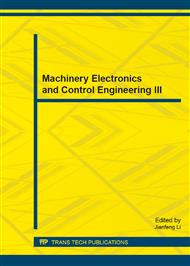p.584
p.590
p.594
p.598
p.602
p.607
p.611
p.615
p.619
Flight Flow Balanced Allocation in Terminal Airspace
Abstract:
A nonlinear integer programming model (NIPM) with constraints is proposed to solve the allocation of approach flight flow where ends with terminal airspace, an example of an airport terminal airspace is given, where the flow is accurately forecasted.Analysising flight delays, theres a conclusion: the results solved by NIPM is far better than the average allocation method, for the second-level airspace, NIPM can reduce two flight delays, and the allocation in each flight route tends to be equilibrium, NIPM can also provide air traffic controllers with accurate and reasonable allocation schedule.
Info:
Periodical:
Pages:
602-606
Citation:
Online since:
December 2013
Authors:
Price:
Сopyright:
© 2014 Trans Tech Publications Ltd. All Rights Reserved
Share:
Citation:


